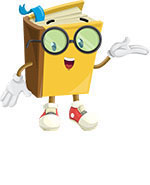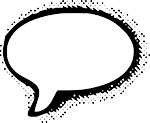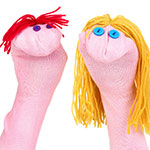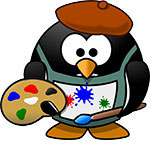“Books are the treasured wealth of a child.”
—Henry David Thoreau
The Power and Importance of Illustrations in Storytelling
At the start of a recent storytime program, I mentioned to the kiddos that sometimes books can be told through the pictures we see. One kiddo stood up and said, “Mr. Z, you can’t tell a story without words.” I smiled because I was prepared for that response. I told them that pictures have a special power where a storyteller can choose the words to describe what they see. I opened the story and showed them the first picture and both the children and adults began to tell the story. Wordless picture books are great for many reasons. They emphasize the importance of art, build on important literacy skills, help children become storytellers, and they are a great source for imagination. For my article this month, I’m sharing ideas on how you can use wordless picture books for any age group.
 Tool 1: Picture Book Walk: A picture book walk is a simple tool to use with both a younger and older audience. I tell children that they will be a character in the story and as I turn the page they will help describe the pictures. A description does not need to be a complete sentence. They can use descriptive words, focus on how many objects they see on a page, talk about the colors, talk about what the people and or animals are doing. It is important to remember that they are describing what they see and their descriptions might not create a linear storyline.
Tool 1: Picture Book Walk: A picture book walk is a simple tool to use with both a younger and older audience. I tell children that they will be a character in the story and as I turn the page they will help describe the pictures. A description does not need to be a complete sentence. They can use descriptive words, focus on how many objects they see on a page, talk about the colors, talk about what the people and or animals are doing. It is important to remember that they are describing what they see and their descriptions might not create a linear storyline.
 Tool 2: Capture the Words: Wordless picture books can also be used in programs for elementary school children. Children will create word bubbles and write their descriptions about the illustrations they see. You can put these descriptions on a board and they can select several descriptions from the list. With multiple children writing descriptions, the story will evolve in various directions.
Tool 2: Capture the Words: Wordless picture books can also be used in programs for elementary school children. Children will create word bubbles and write their descriptions about the illustrations they see. You can put these descriptions on a board and they can select several descriptions from the list. With multiple children writing descriptions, the story will evolve in various directions.
 Tool 3: Puppet Characters: Puppets are always a great tool to add to any reading program. Children will use puppets to describe the illustrations they see and use as an aide to tell the story. When using wordless picture books, you can choose or create puppets reflecting the characters in the story. Using puppets eliminates the fear for children who might not enjoy speaking in a large group.
Tool 3: Puppet Characters: Puppets are always a great tool to add to any reading program. Children will use puppets to describe the illustrations they see and use as an aide to tell the story. When using wordless picture books, you can choose or create puppets reflecting the characters in the story. Using puppets eliminates the fear for children who might not enjoy speaking in a large group.
 Tool 4: Becoming the Artist: For this activity, children will become the illustrator of the story. At the completion of the reading, they will use a variety of art supplies to create their own illustration(s) related to the story. The goal is not to recreate an illustration from the story rather it is to create an illustration that adds to the story. Some examples include a new character, another character, a new obstacle, or a new ending. This activity can be developed for kindergartners through upper elementary.
Tool 4: Becoming the Artist: For this activity, children will become the illustrator of the story. At the completion of the reading, they will use a variety of art supplies to create their own illustration(s) related to the story. The goal is not to recreate an illustration from the story rather it is to create an illustration that adds to the story. Some examples include a new character, another character, a new obstacle, or a new ending. This activity can be developed for kindergartners through upper elementary.
 Top 20 Wordless Picture Books (compiled by Mr. Z.):
Top 20 Wordless Picture Books (compiled by Mr. Z.):
- Flotsam by David Wiesner
- A Ball for Daisy by Chris Raschka
- The Lion and the Mouse by Jerry Pinkney
- Tuesday by David Wiesner
- Chalk by Bill Thomson
- Flashlight by Lizi Boyd
- Flora and the Penguin by Molly Idle
- Journey by Aaron Becker
- Mirror by Jeannie Baker
- Rainstorm by Barbara Lehman
- The Snowman by Raymond Briggs
- Time Flies by Eric Rohmann
- Sidewalk by JonArno Lawson
- Little Fox in the Forest by Stephanie Graegin
- The Only Child by Guojing
- Skunk on a String by Thao Lam
- Fossil by Bill Thompson
- Float by Daniel Miyares
- Wonder by Tao Nyeu
- Fish by Francis Walsh
